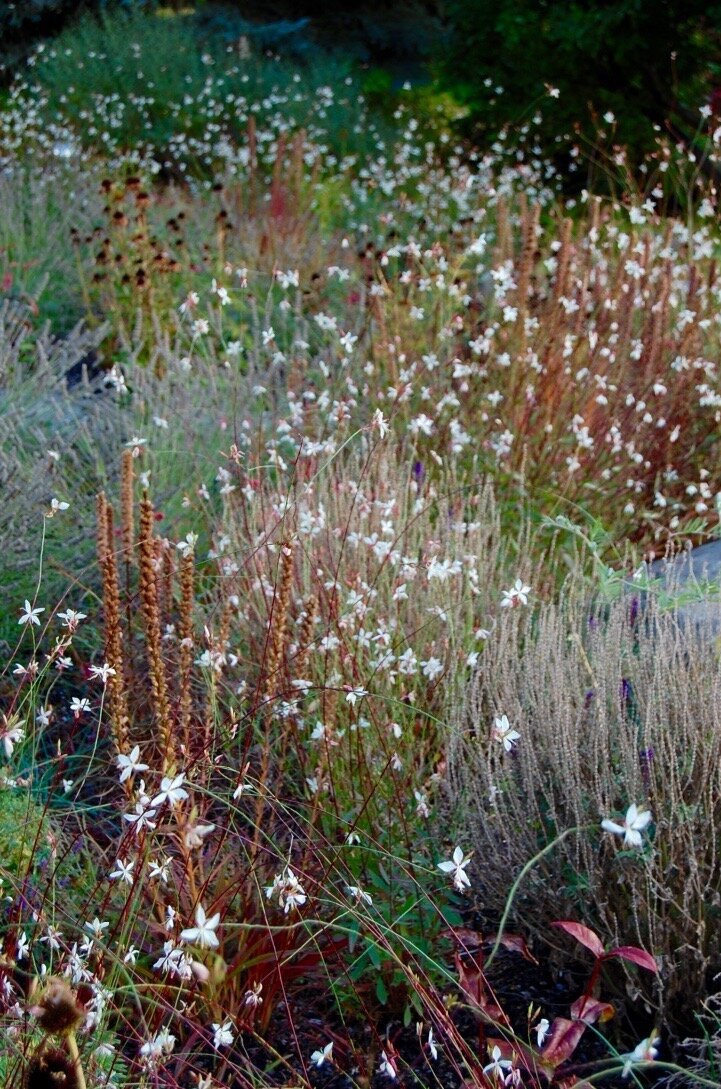A well designed landscape should complement and unite a home with its surroundings. It should be functional for those who use it, as well as beautiful. Materials should be chosen to suit the site, plants placed with room to grow naturally, and selected with future maintenance in mind. Most importantly a garden should be a welcoming place to be enjoyed all year round.
Each garden is different, each client is different and I want to give people gardens they love and connect to. In order to create the right kind of landscape, I take time to discuss the needs, desires and tastes of each client.
I undertake a careful survey of the existing landscape to determine soil types, beneficial existing plants, the aspect and exposure to sun, shade, wind and snow, views to be enhanced or blocked, neighboring trees and views to borrow, the assets and the shortcomings of the site. Armed with this knowledge I aim to create a welcoming front yard and a back yard oasis with places for entertaining and contemplation. This is usually best achieved with a simple, pragmatic design and good planting. Patios require privacy, shade and seating at the very least. To encourage exploration of the landscape, I plan paths and walkable areas to flow through the space to reveal new views and destinations away from the house. Views outside from the house are carefully considered.
I use hardscape sparingly and never gratuitously - this is where much of the budget can be eaten up so it is important to make the right decisions. A bold, simple layout of paver patios and paths often works best to create usable areas, and to relate the house with the landscape. When appropriate, I like to use gravel for patios and secondary paths - a more sustainable and economical alternative to concrete or pavers, these surfaces are water-permeable, visually effective as a void and when defined by steel or rock edging and softened by plants. Built-in seating can help to make the most of smaller multiple use spaces and can encourage use on less than perfect days. Pergolas provide shade, privacy and a more intimate feeling to a seating area, plus the chance to enjoy climbing plants. Fire pits, water features and sculpture offer additional destinations, but these should be added with thought and restraint.
I draw inspiration from the local ecosystem and plant hardworking, long-lived plants, both natives and those adapted to the region which require little water and maintenance and which benefit biodiversity. As well as keeping an eye on new and improved plant cultivars, I like to look at established and even neglected landscapes in and around Spokane to find plants that have stood the test of time and that still look great with little or no maintenance or irrigation. Whenever possible, I try to reduce areas of lawn to a more sensible size, and have created numerous gardens with no lawn at all.
I take time with the design process before beginning any work on-site. If you would like to change your garden more gradually, to spread out the costs, or to tackle some of the more enjoyable tasks in your own time, I recommend working with a cohesive master plan. This will help prioritize tasks and to avoid the disjointed look that can often occur when a garden evolves at different times.
After the design is done, and tweaked at installation time to really fit the garden, the real magic happens after a few years as the plants grow and some of them self-sow and move around and create something far more interesting than I could have done sitting at my desk.
